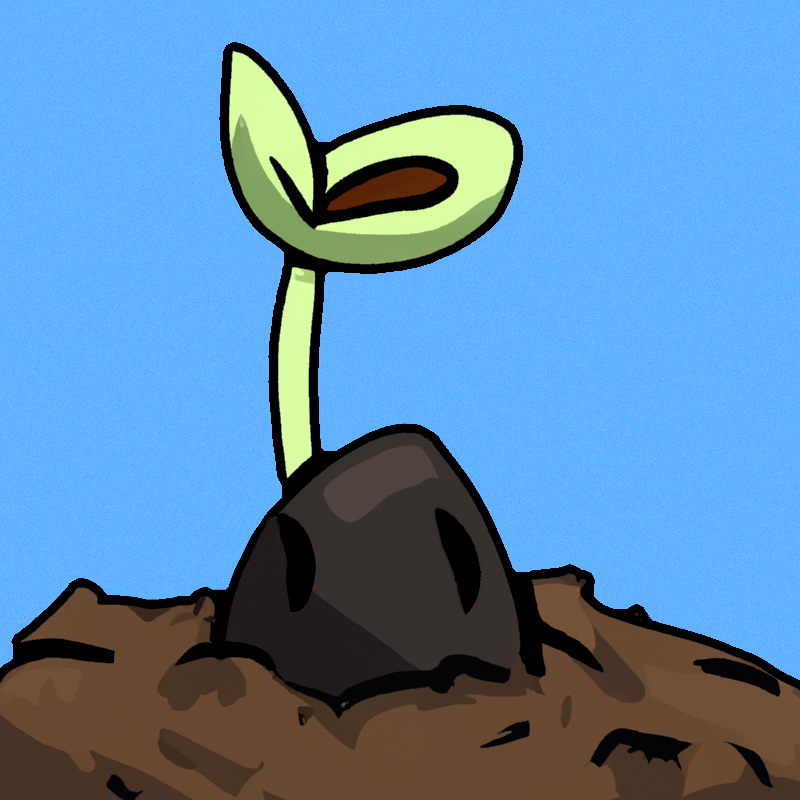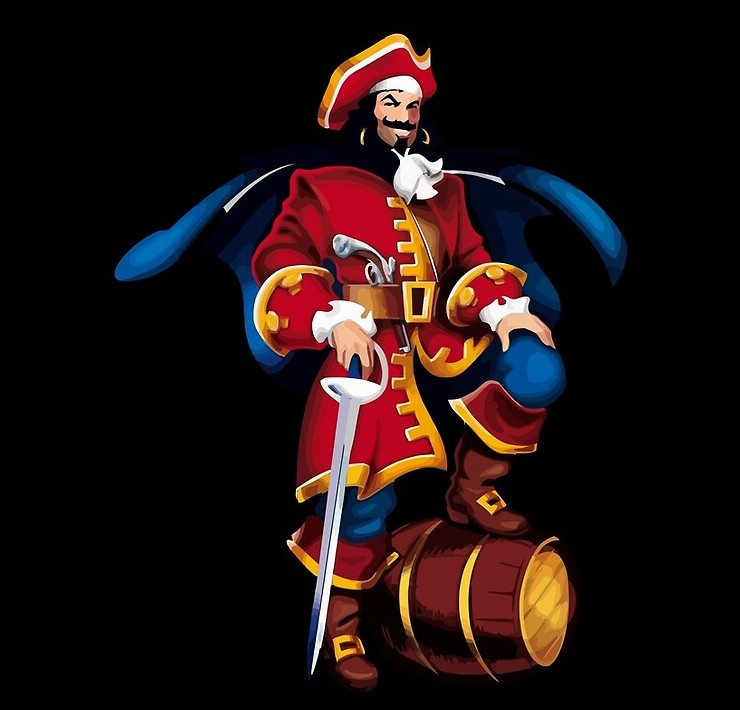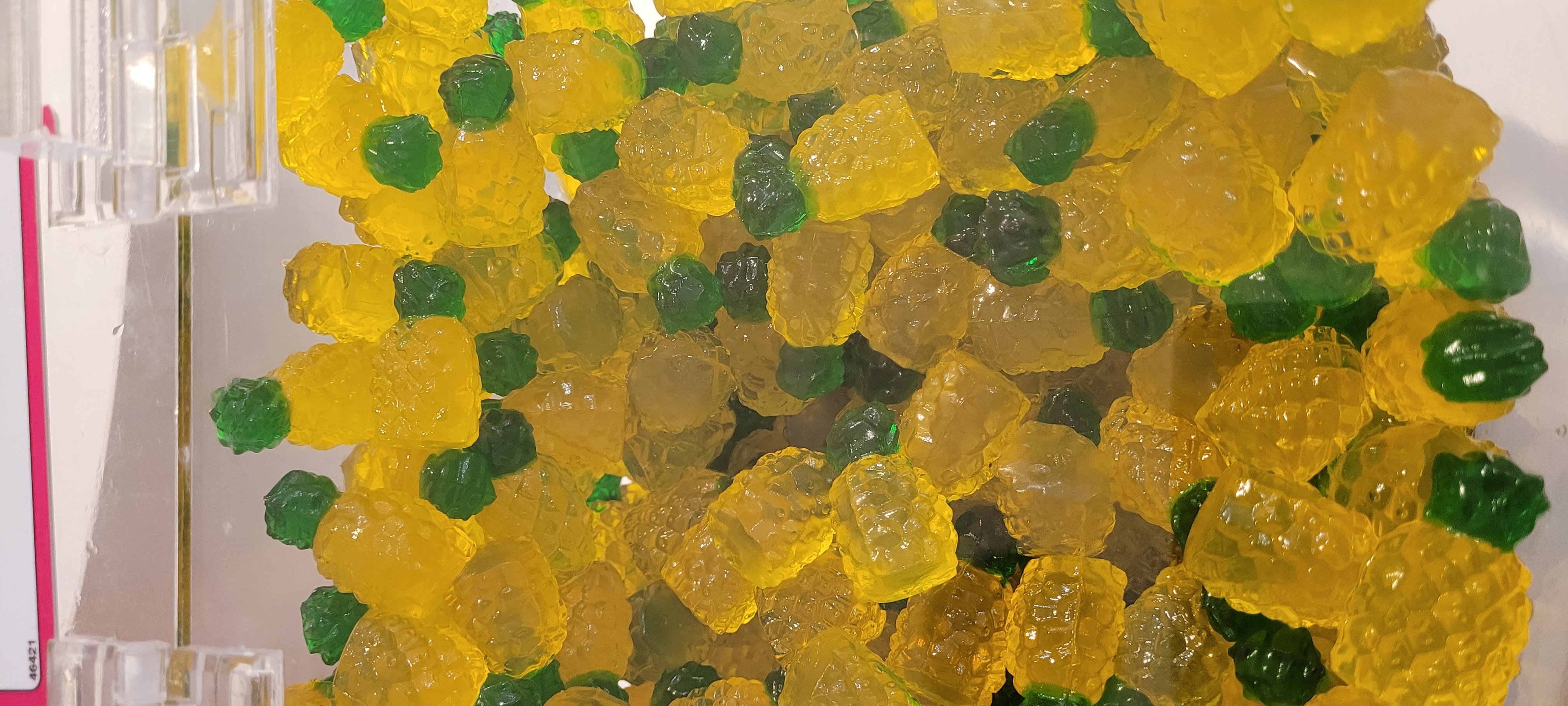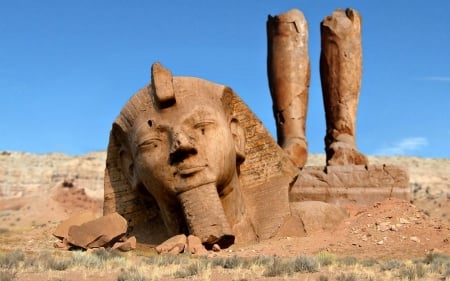For instance, a foot…is basically a foot length. So there’s this foot-measuring waddle some people do walking literally heel-to-toe to get a general sense of the space. An inch is kinda a finger width, etc (they’re all not perfect by any sense).
I’ve decided to just take the plunge and basically re-learn all my measurement systems because I’m seeing less and less of those being used. I started with just memorizing all the conversions but that’s literally just adding another step. Everything I own basically has settings to switch or show both measurements (like tape measures) so I’m just going to stop using Fahrenheit and the United states “Customary System” all together.
Any tips or things you’re taught or pick up on? There’s a funny primary school poem for conversion of customary liquid measurements,
Land of Gallon
Introducing capacity measurement to learners can be challenging. To make this topic more accessible and memorable, we can integrate creative and interactive activities into our teaching approach. Using storytelling, we can transform the sometimes daunting task of learning measurement conversions into a whimsical tale.
- In the Land of Gallon, there were four giant Queens.
- Each Queen had a Prince and a Princess.
- Each Prince and Princess had two children.
- The two children were twins, and they were eight years old.
Once students are familiar with the story be sure they see the connection between the story characters and the customary units of capacity measurement. If necessary, label the story pieces with their corresponding units of measure: queen = quart, prince/princess = pint, children = cups, 8 years old = 8 fluid ounces. You can reduce the number of customary units in the story based on student readiness. link
tl;dr looking for anything to remember the hierarchy and memorizing the metric and Celsius measurement system, sometimes explained in schooling or local sayings. (if I had an example for those systems I would give one lol).
looking for anything to remember the hierarchy and memorizing the metric and Celsius measurement system, sometimes explained in schooling or local sayings. (if I had an example for those systems I would give one lol).
This is how I was taught it in school:

A person who buys some material, Thinks to themselves managerial, I could use grams or litres, Maybe even amps or square meters, At least it isn’t Imperial.
If it’s 0 degrees outside you’re cold, if it’s 100 degrees outside you’re dead.
A good base is knowing milli is a thousandth and kilo is a 1000 1000 milligram = a gram, 1000 grams = a kilogram 1000 millililters = a liter, 1000 liters = a kiloliter 1000 millimeters = a meter, 1000 meters = a kilometer
Plus, they’re all connected. 1 gram of water is 1 milliliter and takes up 1 cubic centimeter.
A good base is knowing milli is a thousandth and kilo is a 1000
YES! I feel like a common pitfall people run into is trying to bust out all sorts of fancy prefixes, deka, hecto, centi, deci, etc and then people get overwhelmed by all of that.
The most common prefixes are kilo 1000x or milli 1/1000. That’s all you should focus on.
1 cm is about the width of the tip of your pinky finger.
1 m is about the distance from your nose to your fingertips if you hold your arm out, and extend your fingers.
100 m is the length of the straight section of an athletic track, which is about the same length as a football field.
1 mL is about the volume of the tip of your pinky finger.
1 L is about 1 quart, which is half a carton of milk (unless you get milk in the smaller 1 quart size).
The m-to-km conversion is pretty close to 1½.
The kg-to-lb conversion is two-and-a-bit.
A difference of 1°C is close to a difference of 2°F.
Edit: My milk comparison was wrong - I’ve corrected it.
The m to km conversion factor is exactly 1000. Same with g to kg and Pa to kPa, W to kw etc.
(maybe you were going for mi to km? Which is 1.6/1?)
I raised my kids using metric temperature for weather. Now that they’re older they hold me to it!
I’m in Canada, and learning French in school actually helped me with fractional measurements since French is based on Latin.
Cent is 100 in French, so 1/100 meters is a centimeter
Mille is 1000 in French, so 1/1000 meters is a millimeter
Dix is 10 in French, so 1/10 meters is a decimeter (this is last because it’s not super helpful since you never see deci- units in the wild outside of niche applications)
And for the powers of 10, we only really talked about kilo (1000) in school, but I was interested in computers since I was a child so I figured out mega, giga, terra, etc fairly early on.
For daily use of temps, I found it best to just switch my apps and stuff to use Celsius. Then just made a point to take mental notes as to see what the current temps were on my devices. Especially when it was feeling too hot or cold. On days that felt nice, would see what temps they were and just kind of learned what ranges were between them (I tend to find 16-23C to be fine warm temps).
I can’t say exactly what the temps in Fahrenheit directly. But can give a range for friends and co-workers if they happen to ask me what the temps are outside (they obviously take the Celsius value as not helpful but they know I am going to give them). I can say that for me the “exposure therapy” of just using Celsius has been much easier than things like distance. I can kind of handle thinking of static distances, but I am not able to translate active things like speed.
For Celsius:
30 is warm
20 is nice
10 is chilly
0 is ice
1L of water is 1kg
2L bottle of cola is 2kg
It’s better than 1L because who even knows what 1L is?
It’s great that the units are linked like this. I actually had to use this once. I didn’t have a container to measure out 1liter of water, but I did have a kitchen scale that could measure 1,000 grams! 🙌🏽
Measuring liquids by mass is even more accurate because the volume is related to temperature, plus the surface tension and water’s tendency to climb up the walls of the container can make the volume readings ambiguous
I just learned some basic things and go from there.
A Ruler is Ruler 12 inches or 30 cm
A meter is roughly equivalent to a yard slightly more and both are like 1 big step
And then i just remember that theres 2.2 lbs per kg
1.6 kms per mile
Uhm, it might sound arrogant but in metric you don’t need that sort of thing? The next order of measurment is just ±10^x where X is the number of dimensions you want to look at: 10 for i.e. length, 100 for area and 1000 for volume.
Lets look at length: Most commonly used are Millimeter, Centimeter, Meter and Kilometer.
Meter is the base. The name centimeter derives from meter and the Latin word centum meaning 100.So a centimeter is hundredth of a meter (decemeter, 10th, ist not really used much in everyday life). One step further down is millimeter: mille is Latin for thousand, therefore a millimeter is a thousandth of a meter.
Going up Greek prefixes are used: Deka-(10) and hektometer (100) are rarely used and Greek chilloi means thousand and therefore a kilometer is 1000 meters.
Staying in one dimension the same applies to gramme for weight: Milligrams, Gram and Kilograms are the moat common.
Going up in dimensions we use the same prefixes but the multiplyer changes because 10^2 is 100. So to go from 1 m² (one meter to the width times one meter depth) to 1 km² (thousand meters wide times thousand meeter deep)) the multiplier is not 10³ (1000) but 100³.
The whole prefixes are effectively optional and just for better readability.
Sure, it’s always a step of 10x, but you do have to remember all the prefixes. Or you can only remember the 1000x prefixes - but you also need to remember centi-. Then, nobody says “megagram” - it’s “ton”. So there are quirks to remember.
Then, nobody says “megagram” - it’s “ton”. So there are quirks to remember.
We absolutely should, though… That and megameters, for car mileage. We always round off to the nearest thousand kilometer anyway.
*tonne
Yes/No. There are quirks such as “ton” but in essence you can say 1 million gram and everything is fine. Remembering all those short forms is a nice to have, not a requirement.
The next order of measurment is just ±10^x
There’s a strong possibility that I’m just dumb, but this used to trip me up at first. Especially if I was on the spot: 1250mm to m, go! Uh, 125.0? Uh, 12.50?! Uh, 1.250! Yeah!
Or 1.5L to mL, go! Uh, 150mL? Uh, 1500mL! Yeah!
Also, realizing that the most popular prefixes are either kilo 1000x or milli 1/1000 helped. For example, cm don’t seem very common, like dimensions are almost always in mm.
I heard someone say once, the metric system is better by a thousand.
Not arrogant, I get the hierarchy statements being mundane especially for someone who’s inundated within the systems themselves. The honest answer to this is sometimes everyone doesn’t learn at the same pace or get upset when they’re confronted with something different. For instance, if I were working with someone that didn’t complete school or had a learning disability, I could see them eventually grasping milli and centi (I still hesitate with if I’m using them properly with MM/mm/mM) but then hekto-deka is another tall order for someone who just wants to get off work and have a beer without the hassle lol. A school yard saying that uses order listing as an acronym for a Mnemoic like EGBDF in music (Every Good Boy Does Fine) would be cool.
Mostly though, it’s more about like the “foot” measurement thing. Something like wrapping my head around the average body weight, cool factoids like comparing volumes of water or like someone commented that 100 is the boiling point, etc.
edit: @donuts@lemmy.world just responded with the mnemonic I was looking for lol.
Get ruler. Hold your arm out 90degrees, Measure from the tip of your finger 1 metreacross your body, and rember where that Metre ends on your body. Then you always have a reference for 1metre
I was taught this to measure electrical cable. For me it’s from my left shoulder bone to my right finger tips (or the right shoulder to left finger tips)
YES! Do it brother! 👏 I’m US born and raised and I’ve voluntarily switched to metric a while ago. Metric is actually more intuitive to me now.
I started with just memorizing all the conversions but that’s literally just adding another step.
Personally, I think this is a mistake. What worked for me was to start building reference points in metric directly. No conversions.
- yes: “Oh, it’s nice outside. What temperature is it? 20C, great. I’ll remember I like 20C.”
- no: “I like 70F, what’s that in Celsius?”
- yes: “Wow. That’s long board. How long is it? 2m, great. I’ll remember 2m is long.”
- no: “What’s 6ft to meters?”
Don’t ask, “What’s this in metric?” just ask directly “How long/fast/heavy/hot is this thing?”
You need to get out there and start measuring and experiencing stuff. Measure parts of your body to build more reference points. For example, I know from the floor to my waist is about 1m, from the tip of my index finger to the first bend line is about 2.5cm. My weight is about 65kg. Normal body temperature is about 37C, but 38C and above is a fever. My mom’s house is about 30km away.
Switching temperature to C is pretty easy, that’s a good start. Here are some other tools that may help.
- meter only tape measure (I love this tape measure) measure the length of everything
- gram only kitchen scale measure the weight of all your food
- newton-meter only torque wrench tighten all the bolts
Also, did you know Amazon US limits the products available to us? But you can break out and shop from Amazon Japan, for example, and get products that aren’t available from Amazon US. I’ve found that Amazon Japan has way more metric-only options than other places.
I really like buying metric only tools because:
- it removes the possibility of relapse, forcing you to build new reference points
- it removes the possibility of other people messing with the units
- it removes clutter from the UI, making it easier to use
Eventually, you could switch your car too, but I wouldn’t recommend you do that right now. After a few months, you’ll start getting the hang of metric more. It really doesn’t take that long to adjust.
P.S. Does anyone know where I could get some metric-only measuring
cupscans, containers, vessels?I have some metric only measuring instruments from ali express. Plastic containers, measuring tapes, rulers, squares etc.
Most stuff on Ali is in metric unless its been specially converted to Imperial (which is more expensive).
Search for “measuring cups”:

P.S. Does anyone know where I could get some metric-only measuring cups?
The key is to never use measuring cups, stick to the scale for everything. Using recipes made with mass is the bed way to do it, but if you are trying to adapt a volume based recipe, look at the serving size on the food package; it should be given in volume and mass. For example my king arthur brand 00 pizza flour serving size is 1/4 cup (30 g).
Meters is extra easy if you’ve played Minecraft because you know you need a two-block height for head clearance, and you can estimate the sizes of other things from there.
I second this! I was in the US for a while and quickly realised that doing constant conversions was a PITA, so I learned some rough reference points in imperial.
I think it’s good to get some small and some large reference points, which make it easy to guesstimate other things based on what you know. Mine were (given in metric here):
- A glass of beer is 0.5 L.
- A big barrel is about 200L (0.2 m^3).
- My walk to work is 3 km, a long hike is 25 km.
- A very short person is about 150 cm, a very tall one is about 2 m.
- I can deadlift about 100 kg, and bicep curl around 15 kg.
- A potato is on the order of 100g, while a watermelon is around 2kg.
- 70 C is a nice sauna, 25 C is a nice summer day, 10 C is chilly, 0 C is sleet-temperature, -10 C is powder snow cold (depending on where you live the colder temps might be more or less relevant)
Figure out some similar things for yourself, and it’ll be relatively easy to think along lines like “That walk was a bit further than my way to work, so it’s probably about 4km”, or “that box was heavy, but far from 100 kg, so it’s maybe around 30 kg.”
Bonus points if you try some guessing like that and double check afterwards to tune in your feeling for different measurements.
I wonder if the reference thingy works for languages too.
Because thats why Kids are soo good at learning languages while adults have more issues learning new languages. Mainly because they want to see the word translations, etc. That would be hard for japanese or chinese I think as they work entirely different
I think it has t do with neuroplasticity.
As a European, I have never used measuring cups. Our recepies call for ingredients to be measured in Milliliters for water and milk and Grams for everything else. We use cans like these for volume measurements: https://www.idealo.de/preisvergleich/OffersOfProduct/204600175_-messbecher-935000-0-5-liter-bruchsicher-huenersdorff.html
never used measuring cups … We use cans
Sure, yeah, that’s what I meant. Some physical artifact I can use to measure liquid in ml.
These look perfect! Thanks!
For temperature:
Water freezes at 0, boils at 100. Room temperature 20 degrees Celsius. Normal body temp 37 degrees.
Trivia of minus 40 Fahrenheit being the same as minus 40 Celsius.
Height and weight are usually still thought of in imperial (canadian here), so I think of myself as 6’2", instead of 188 cm.
Volumes and lengths and weights are related. One cubic cm is one mL of liquid. One cubic centimeter of water weighs one gram. One thousand mL of water makes one Liter, which weighs one kilogram.
2.205 ponds makes one kilogram.
Shifting between miles and km is a pain in the ass, given the 1.6 km per mile.
1 mL (or cubic centimeter) of water weighs 1g, not 1 mg. 1 mg would be 1 microliter of water, or one millionth of a liter.
Yes! My bad, will edit.
Miles and Kilometers are very close to the golden ratio. So adjacent Fibonacci numbers can be used to approximate them.
5 mi is about 8 km
8 mi is about 13 km
etc
This advice is also golden!
1 calorie is the heat required to increase the temperature of 1 ml of water by 1 degree
It’s weird i know my measurement in both metric and imperial because when I was a child i learnt to play lawn bowls and all the old people measured everything in inches feet and yards, then when I became a mechanic there’s the three spanner sets so I can do all those.
As for tips, I worked out my own pace count for 100 meters, and at my old workshop we had meter increments on the floor so you could work out what kinda goofy arse step you need to take for 1 meter.
Temperature obviously 0 is frozen water 100 boiling anything over 40 is damn hot outside but that one varies for person to person.













